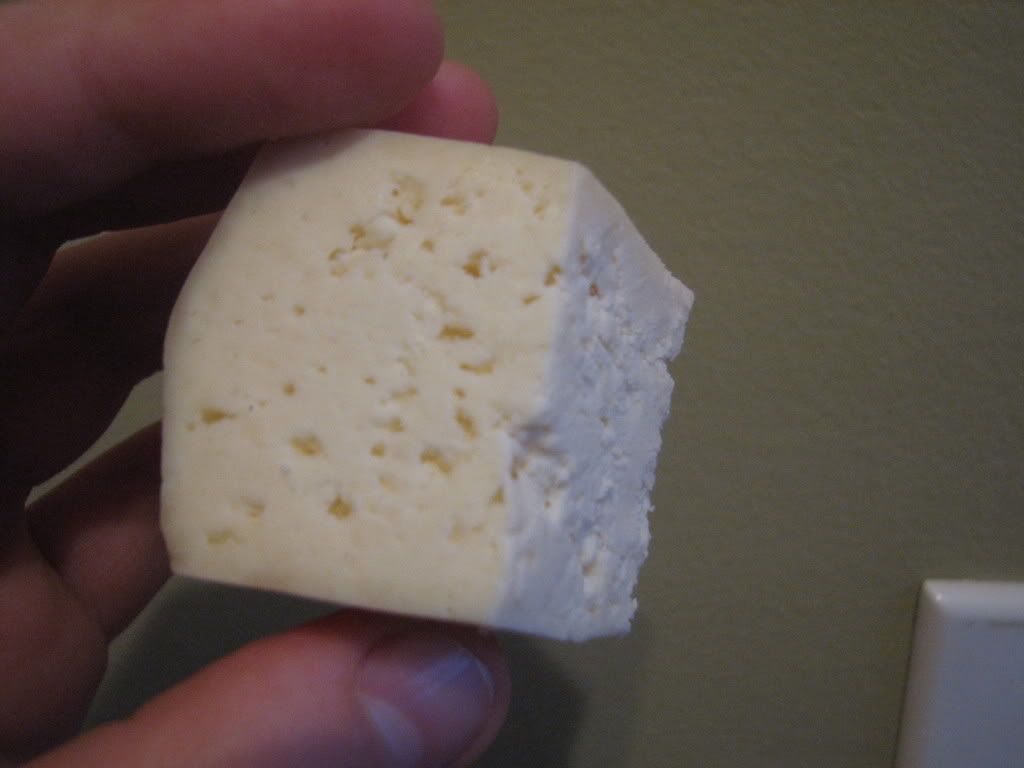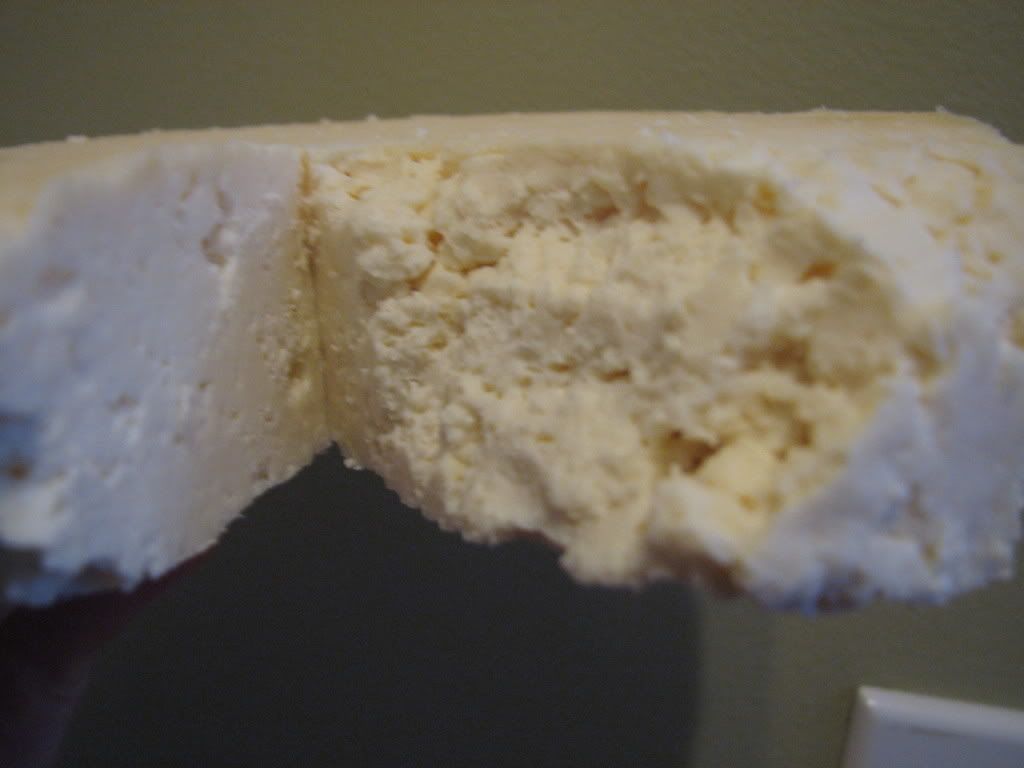Hi, I’m new to this forum. I’ve just recently gotten into cheese making, and have made some mozzarella and basic fresh cheese. This was my first attempt at a hard cheese. It’s a two-gallon recipe of farmhouse cheddar from Ricki Carrol’s home cheese making, using the bandaging technique for aging (coat with shortening, and bandage with cheesecloth). Today was the one-month mark, and I unbandaged it. Lots of mold developed on the outside, but the book says that that is normal, and keeps moisture inside. When I took of the bandage, most of it came off, and then I wiped it with vinegar. However, when i cut into it, I found that there were gaps (bubbles?) in the cheese. It tasted fine, maybe a little sour, but still good. I wanted to know what could have caused this. Also, the cheese’s weight was reduced by almost one third after one month. My theories are:
- The curds were contaminated by yeast or another bacteria
- I broke up the curds too small before pressing.
- Since both the recipe and the bandaging method are meant to make a drier cheddar, the curds were not pressed together hard enough, and as they dried out, they pulled away from each other.
Does anyone have any ideas why this could have happened? I have included some pictures below:
The mold that developed on the outside of the cheese after 1 month:

A wedge of the cheese:

The inside of the cheese wheel (one side has been broken):

Any suggestions are much appreciated.
